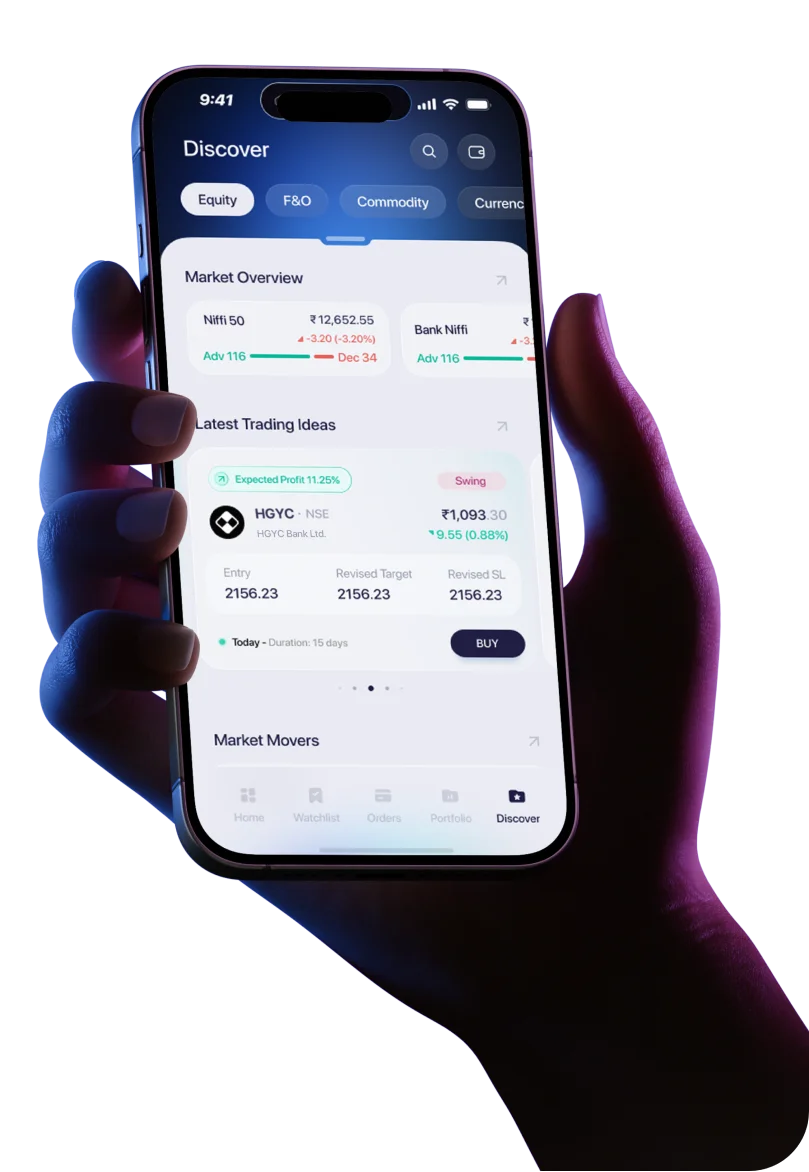Intraday trading, also known as day trading, involves buying and selling financial instruments within the same trading day. Unlike long-term investing or delivery-based trading, where positions are held for days, weeks, or even years, intraday traders aim to capitalize on small price movements that occur within a single session.
This trading style has gained massive traction in India, especially with the rise of low-cost trading platforms, advanced charting tools, and faster internet access. Many retail traders are now exploring intraday trading as a way to generate consistent daily income or supplement their primary earnings.
Whether you're new to the market or refining your current strategy, understanding the fundamentals, benefits, and best practices of intraday trading is crucial for long-term success.
What is Intraday Trading?
Intraday trading is the practice of executing trades — buying and selling securities — within the same trading day. The core idea is to capture small price movements that occur during the day rather than holding positions overnight.
This style is particularly popular in instruments such as stocks, equity derivatives (futures and options), commodities, and ETFs. Since all positions are squared off before the market closes, it reduces the risk of overnight news or global events impacting your portfolio.
Comparison: Intraday Trading vs Delivery Trading
Feature | Intraday Trading | Delivery Trading |
|---|---|---|
Holding Period | Same day (T+0) | Multi-day or long term (T+1/T+2) |
Capital Requirement | Lower (leverage available) | Full capital required |
Objective | Short-term profits | Long-term wealth creation |
Risk | Market volatility | Overnight gaps/news |
Charges | Typically lower | Standard delivery brokerage |
Why Do People Choose Intraday Trading?
There are several compelling reasons why traders opt for intraday trading over delivery-based approaches:
- High Liquidity: Intraday trading focuses on highly liquid stocks, ensuring easy entry and exit.
- Lower Margin Requirement: Traders can take larger positions with a smaller amount of capital due to margin/leverage.
- Opportunity for Daily Profits: Every day presents new setups and volatility, allowing multiple profit-making chances.
- No Overnight Risk: Positions are squared off before market close, eliminating the risk of overnight price gaps.
For those comfortable with fast decision-making and technical setups, intraday trading offers a dynamic and potentially rewarding approach.
Key Benefits of Intraday Trading
While intraday trading comes with its risks, there are several advantages that make it attractive:
- Leverage and Margins: Brokers often provide leverage, allowing traders to amplify their position size with limited capital.
- Faster Capital Rotation: Profits or capital from a trade can be redeployed the very next day.
- Real-Time Opportunities: Traders can react instantly to news, breakouts, or technical signals.
- Lower Holding Risk: Since trades are closed within hours, you're less exposed to macro events, earnings surprises, or global market swings.
- Reduced Brokerage: In most cases, intraday trades incur lower brokerage charges compared to delivery trades.
Important Tips for Intraday Trading
Success in intraday trading relies heavily on preparation, strategy, and emotional control. Here are some of the most effective tips:
- Trade Liquid Stocks: Focus on stocks with high average daily volumes. Liquidity ensures smoother entries and exits.
- Always Use Stop-Loss and Targets: Predefine your exit points. This helps in risk control and prevents emotional decisions.
- Avoid Trading on Tips or Rumors: Base your trades on solid technical or fundamental analysis, not market chatter.
- Learn to Read Charts: Familiarize yourself with candlestick patterns, support/resistance levels, and chart indicators.
- Use Technical Indicators Wisely: Tools like RSI, VWAP, MACD, and Moving Averages help identify entry/exit points.
- Limit Overtrading: Avoid multiple trades in a single session. Focus on quality setups instead of quantity.
- Time Your Trades: Often, the best intraday moves happen between 9:30 AM to 11:00 AM and 1:30 PM to 2:30 PM.
- Maintain a Trade Journal: Document your trades, reasoning, and outcomes to improve over time.
These tips form the foundation of disciplined trading and help reduce impulsive decisions.
Common Mistakes to Avoid
Even experienced traders can fall prey to avoidable errors. Here are some pitfalls to stay away from:
- Holding Positions Overnight: Intraday positions should be closed on the same day. Holding them overnight increases exposure and changes the trade’s nature.
- Ignoring Stop-Loss: Not placing a stop-loss can turn a small loss into a large one.
- Chasing the Market: Jumping into trades without confirmation or chasing breakouts can lead to poor entries.
- Over-Leveraging: Using too much margin can magnify both profits and losses. Manage your risk smartly.
- Lack of Discipline: Trading emotionally or without a plan often leads to inconsistent results.
Avoiding these mistakes is as important as learning strategies.
Beginner-Friendly Intraday Strategies
New to intraday trading? These simple strategies can offer a great starting point:
- Breakout Strategy: Trade when the price breaks out of a defined resistance or support zone with volume confirmation.
- Gap-up/Gap-down Strategy: Identify price gaps at open and trade based on continuation or reversal setups.
- Moving Average Crossover: Buy when a short-term moving average crosses above a long-term average (e.g., 9 EMA > 20 EMA).
- Reversal Patterns: Patterns like hammer, bullish engulfing, or double bottoms can signal intraday reversals.
Keep in mind: every strategy requires testing, risk control, and consistency.
How to Start Intraday Trading
Starting intraday trading is easier than ever today. Here’s a simplified process for beginners:
- Open a Trading and Demat Account: Choose a platform that offers live charts, fast execution, and smart order types.
- Explore Platform Features: Use margin calculators, real-time watchlists, and technical indicators.
- Use Risk-Managed Order Types: Tools like Bracket Orders or Cover Orders help place auto stop-loss and target.
- Build a Watchlist: Track a select group of liquid stocks or indices.
- Start Small: Begin with lower capital and gradually scale up as your confidence grows.
Practice is key. Consider using virtual trading or smaller lot sizes to refine your strategy before going full scale.
Conclusion: Trade with Knowledge, Not Noise
Intraday trading is an exciting but fast-paced domain. With the right combination of discipline, technical knowledge, and risk control, it can offer consistent opportunities. However, it’s not about making a fortune overnight — it’s about mastering a craft.
Focus on continuous learning, stick to proven strategies, and stay calm under pressure. Whether you're aiming to trade full-time or just part-time, intraday trading rewards those who prepare, adapt, and respect the market.
Stay sharp. Stay focused. And trade only what you understand.



 Easy & quick
Easy & quick
Leave A Comment?